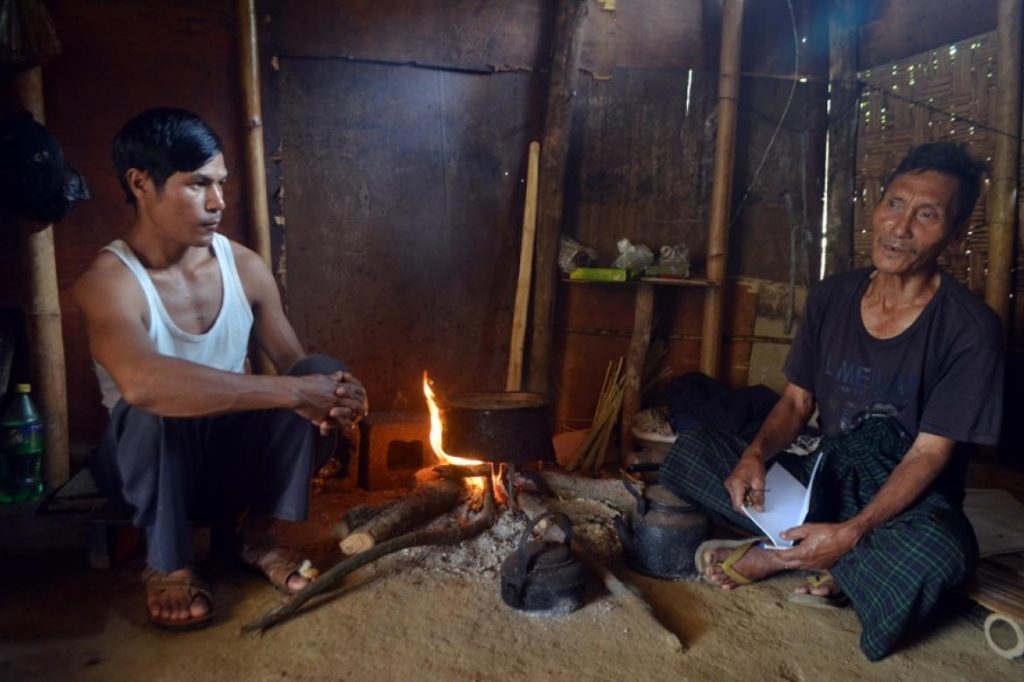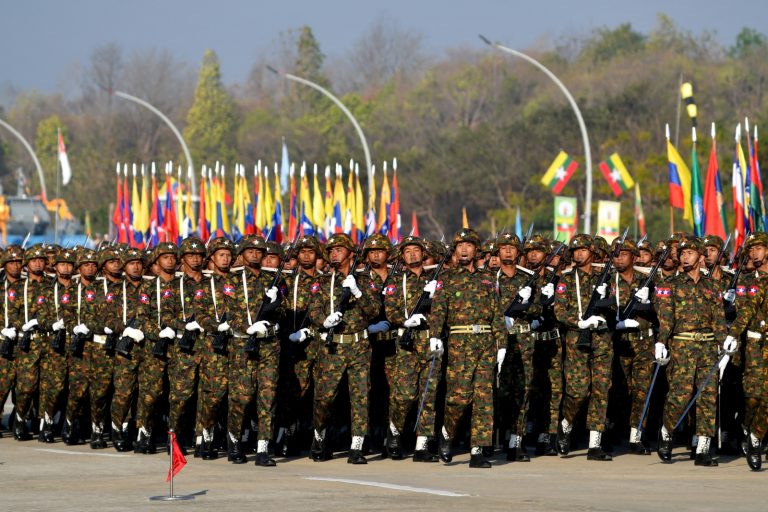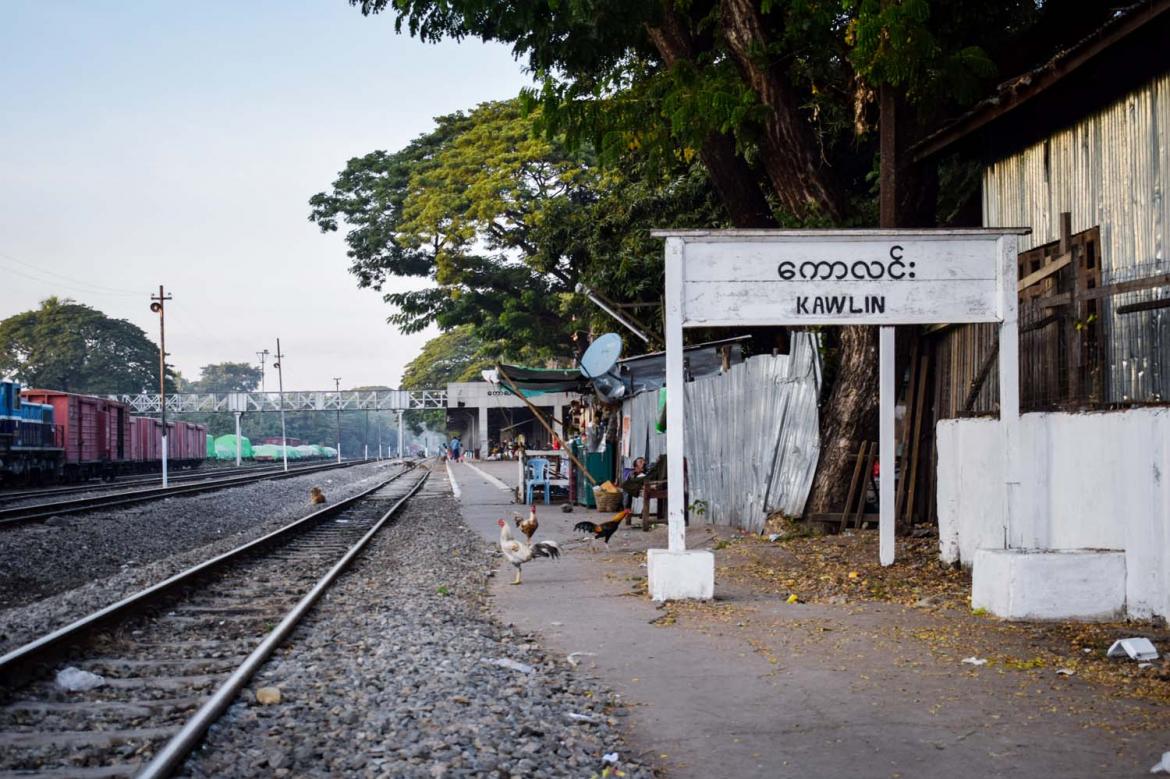Some 40,000 displaced Kachins have now spent five years in camps in remote, KIA-controlled mountains, where humanitarian aid deliveries have dwindled.
By HTET KHAUNG LINN | MYANMAR NOW
N-HKAWNG PA IDP CAMP, Kachin State — Za Hkawng, a 70-year-old ethnic Kachin man, prepares some tea in his small bamboo hut situated on a windy mountain ridge and recalls how he used to live off the land as a farmer.
Though his farm in Mahn Taung Village is only a half day’s walk away from his shelter here in N-Hkawng Pa IDP camp, he hasn’t grown any crops in five years.
His village is now a frontline position of the Kachin Independence Army, which has fought a grinding war with the Myanmar military in the mountains of northern Myanmar’s Kachin State since June 2011, when a longstanding ceasefire collapsed.
Za Hkawng said he was tired of living in a hut and relying on food donations that are supplied to his camp in Waimaw Township. It is one of 29 sites under KIA control that provide refuge to some 40,000 internally displaced civilians.
Support more independent journalism like this. Sign up to be a Frontier member.
“Every day, I’m not happy here,” he murmured, while looking out over the surrounding mountains, some of which were capped with snow and shrouded in dark clouds during a visit by this reporter in early June.
Exhausted by camp life
KIA forces control small, mountainous areas on the Myanmar-China border and are headquartered in Laiza town. The IDPs have lived in these remote, rough areas for five years now, cut off from government services and reliant on the KIA’s civilian wing and several aid NGOs for food, shelter, education and healthcare.
N-Hkawng Pa IDP camp houses 1,708 people and is situated along a creek that demarcates the border with China. The site is isolated and the vicinity of the frontline adds a sense of danger to the helplessness felt by many camp residents.
“We don’t even dare to go into forest around here to find firewood or vegetables — it’s very dangerous as the army might suspect we are KIA members,” Za Hkawng said, adding that civilians caught by soldiers are often tortured.
Only the elderly, women and young children stay at the camp. Most of the young have crossed into nearby China to look for work and many have become farm laborers.
Za Hkawng stays here with a wife and members of his extended family who live in five other huts clustered on the mountainside. He and his wife had three children, but all passed away before the war.
Camp residents rely on increasingly infrequent food rations from the UN World Food Programme (WFP) and other aid support from the Metta Foundation and Kachin NGO Wunpawng Ninghtoi.
“It’s not really enough for us,” Za Hkawng said of his food ration, adding that his family rarely gets to eat meat.
Khon Ra, a Kachin Baptist preacher and medical worker from Lashio, Shan State, runs a small medical clinic in N-Hkawng Pa camp.
“I’m now working for my Kachin people. I can provide treatment only for minor cases, such as fever,” she said, adding that serious cases are sent to a KIA-run hospital in the larger Maija Yang City, or to the Myanmar border town of Muse in Shan State, which can be reached via China.
“About 50 persons have died here in the last five years, and many suffer from serious mental trauma caused by civil war,” she said.
Local aid workers have warned that a prolonged stay in the camps also causes social problems, such as domestic violence, divorce and substance abuse, while a lack of education and poverty affects children’s development.
Reduced aid for KIA-run camps
As the Kachin conflict enters its sixth year, clashes between the KIA and the army continue. Some 100,000 civilians have fled the fighting and about 80,000 are registered camp residents — about half of the displaced stay in KIA-controlled areas.
International attention for the conflict has been flagging, however. Meanwhile, other humanitarian crises in Myanmar — such as last year’s flood disaster and increased fighting in Rakhine and northern Shan states — have also required international aid support.
As a result, WFP has reduced aid in Kachin State. Since early 2016, it has changed support for some 28,000 Kachin IDPs in government areas from food baskets to monthly cash transfers of around 9,000-13,000 kyats per person (US$7.50-11).
Another 9,000 ‘vulnerable’ IDPs continue to receive WFP food rations, but half of these households have seen their monthly food rations cut to 11.5 kg of rice, 1 kg of pulses, 450 ml of cooking oil and 150 g of salt.
The situation of IDPs in the remote KIA areas is even tougher. Their camps suffer from a lack of aid access and though WFP said it would not reduce food rations there, aid delivery is irregular and hindered by conflict.
In the month of May, WFP said it “delivered two-three month food rations for over 8,400 IDPs in five IDP locations” in KIA areas, while “delivery to Laiza has been postponed due to volatile security situation.”
Yanghee Lee, the United Nations Special Rapporteur for Human Rights in Myanmar, noted in her end-of-mission statement last week that ongoing conflict had further reduced humanitarian access to KIA-controlled areas.
“Previously there was access, albeit subject to some limitations, to the more than 40,000 IDPs in non-government controlled areas. However, access has been blocked in recent months, with a proposal made to deliver assistance to neutral or government controlled areas – a 1.5 day walk for many of those affected,” she said.
Lee added that her planned visit to Laiza to look into this situation was refused due to security considerations.
A hope for peace
The National League for Democracy (NLD) government controlled by Aung San Suu Kyi has pledged to resume ceasefire negotiations and to hold a nationwide conference within months, dubbed the 21st Century Panglong Conference.
It hopes to broker an all-inclusive accord that brings on board half a dozen armed groups, including the KIA, that are still embroiled in clashes with the army in Kachin, Shan and Rakhine states.
It remains unclear, however, whether the NLD can bring the rebel groups and Myanmar’s powerful military together for an accord in such short term.
Za Hkawng knows of the change to a democratic government — though none of the IDPs in KIA areas were allowed to cast their vote last November — and he is aware of the plans to resume peace talks with the KIA.
He said he does not expect that peace will come soon, adding, “We hear a ceasefire deal remains elusive and meanwhile conflicts are happening almost every day.”
Yet, hopes he spent to his last years on his farm. “I don’t want to take shelter anymore. I have become old and want to spend my remaining life in my native village,” Za Hkawng said.
This article was originally published by Myanmar Now. Top photo: Htet Kaung Linn / Myanmar Now







